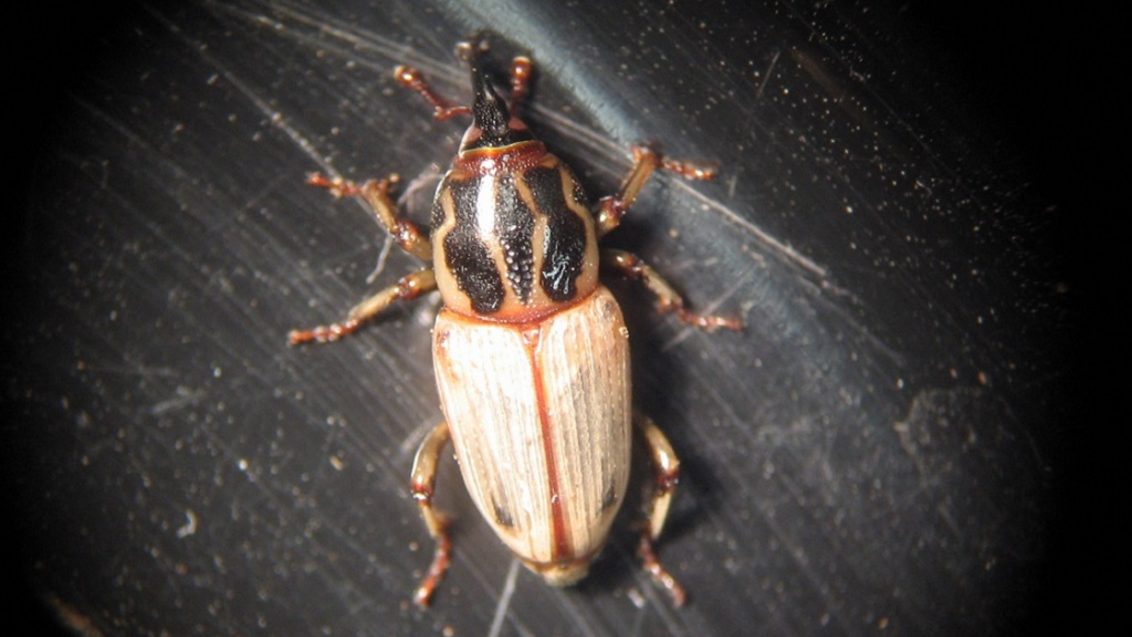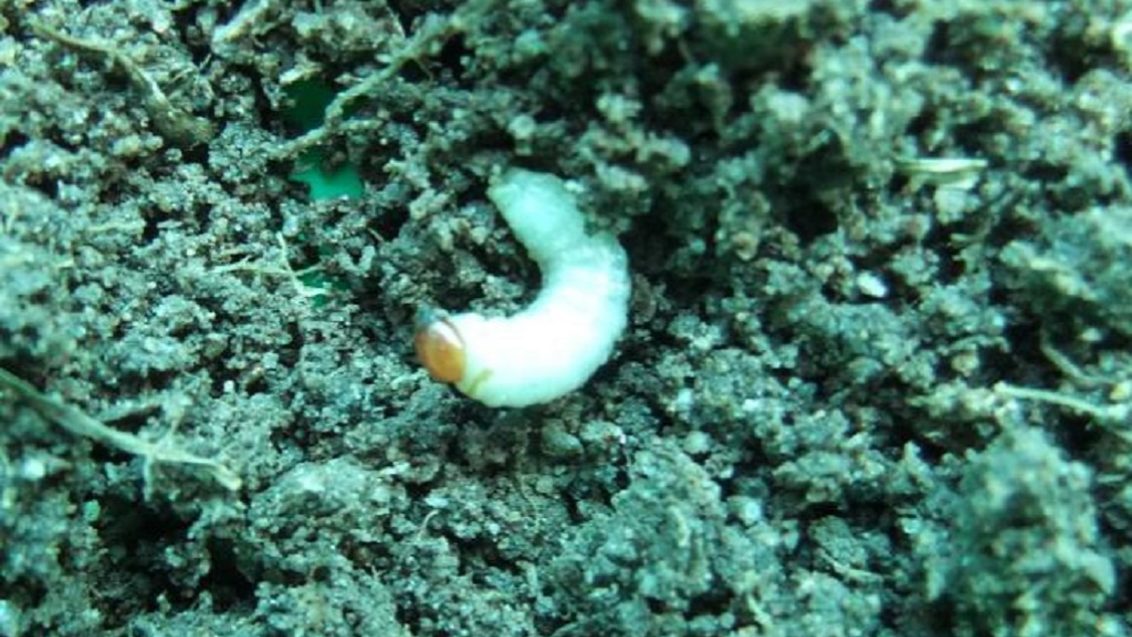Billbug larvae
Insect Pest
Identification
The immature billbug (also known as the La Plata Weevil) is a legless, creamy-white ‘C’ shaped larvae with an orange head capsule and a body up to 10 mm long.
When mature the larvae metamorphoses into a dark brown to black weevil, with a distinctive ‘bill’ like snout, and elbowed antennae. Young adults often have dark brown striping on the wing casings and bodies up to 10 mm long.
Life Cycle
Adult billbugs deposit their eggs within the plant stem, where the larvae develop and feed on the plant. It is at this stage of development that the most severe damage is inflicted to turf grass. As the larvae continue to develop, they exit the plant and begin to feed on the stem and roots. There is no actual data mapping the egg laying timing for LPW in Australia. However, adults are active in NSW and QLD from late August onwards which would suggest egg laying takes place sometime in September. The eggs develop into larvae after 2 weeks and immediately begin feeding as they burrow their way down through the plants to roots. These insect pupae, remain in the soil from late summer to early Autumn. Billbugs have a small number of generations throughout a given season (thought to be about two or three) and overwinter as young adults.
Symptoms
Visible turf injury results as larvae burrow down through the stem of the turf plant towards the crown which destroys the stems and eventually results in the death of the plant itself. The stems of dead turf plants will be hollow filled with sawdust like material.
Affected plants initially turn yellow and may eventually turf brown and die. This can often appear similar to the symptoms of fungal diseases such as Dollar Spot. In periods of high pest pressure, large areas of turf can be killed.
Tufts of dead plants can easily be pulled out of the ground as hollows stems break off at the crown.
Considerations
- Billbugs can be hard to detect until damaging populations are present.
- Inspect areas of turf for pest presence by pulling on leaf blades.
- If leaves pull out easily, or if hollow stems are present then consider applying an insecticide.
- Early intervention is essential to minimise grass damage due to feeding.
Controls
MERIDIAN Turf Insecticide – monitor adult activity through late spring and early summer. Spray when numbers peak or when small larvae (4 mm) are found in the thatch or surface soil. Use the higher rate when pest pressure is high or 2 instar larvae are present.
ACELEPRYN Turf Insecticide or SPINNER Turf Insecticide – monitor adult activity through late spring and early summer. Spray when numbers peak or when small larvae (4 mm) are found in the thatch or surface soil typically around late November to early December. Ensure product placement as close to soil surface as possible.


